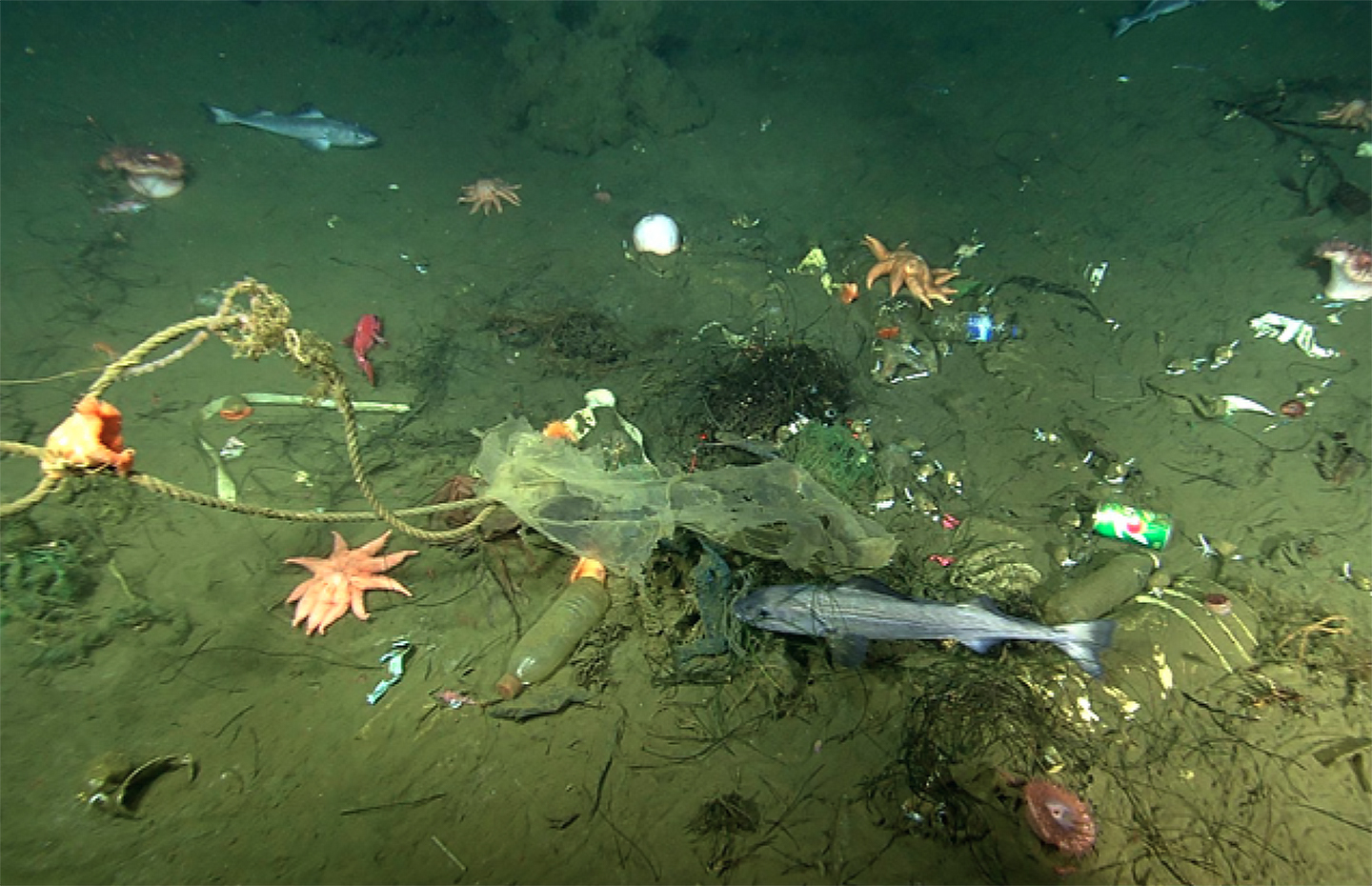Mysterious Craters in the Seafloor Were Likely Formed by Garbage, Scientists Say

Credit to Author: Maddie Stone| Date: Mon, 09 Dec 2019 21:04:42 +0000
While surveying the seafloor off the coast of Big Sur, California, a team of scientists has made a bizarre and depressing discovery: thousands of miniature craters, many of which appear to have been formed by human garbage.
These trash craters, more formally known as “micro-depressions,” were spotted during a series of underwater autonomous vehicle (AUV) surveys led by the Monterey Bay Aquarium Research Institute (MBARI) in 2018 and 2019. Eve Lundsten, who presented the findings at the American Geophysical Union annual meeting in San Francisco today, said the discovery was totally unexpected. The team hadn’t sent its AUVs out to study garbage, but rather to elucidate the origins of a cluster of much larger seafloor craters in the same region that comprise North America’s biggest “pockmark field”.
“The trash was a surprise,” Lundsten said in an interview after her presentation. “We were not expecting to see trash.”
Scientists from MBARI caught their first whiff of the pockmark field—a region of the continental shelf featuring craters that are hundreds of feet wide and about 15 feet deep on average—during a 1999 shipboard survey. For more than a decade, the pockmarks remained a mystery. But in recent years, scientists have been redoubling their efforts to understand the features, following a surge of commercial interest in placing a floating offshore wind farm in these waters. In 2017, the National Oceanic Atmospheric Administration led a comprehensive mapping survey of the seafloor off Big Sur. Combining NOAA’s results with the earlier MBARI work, scientists now know there are around 5,200 pockmarks scattered across a 500 square-mile swath of seafloor.
In 2018, MBARI began a series of underwater robotic surveys in order to study the pockmarks in more detail. During the survey they came across a family of much smaller micro-depressions that are “completely unique,” according to Lundsten. These mini craters, which are about 35 feet wide and three feet deep on average, were roughly three times more abundant than their bigger crater cousins. Lundsten and her colleagues estimate there are about 15,000 of micro-depressions scattered across the pockmark field.
Even after all this recent survey work, the origins of the larger craters remain unknown, although through sub-seafloor mapping and radiocarbon dating, Lundsten and her colleagues can now say that some of them likely have been around for 400,000 years.
By contrast, the researchers are pretty sure the much younger micro-depressions are being excavated by debris, including garbage.
Nearly all of the small craters contained objects, including rocks, bits of kelp, and a whale skull. A “significant” portion of the craters, Lundsten said, also contained some form of trash, including buckets, fishing gear, and loads of plastic debris. One crater even held what looked like an entire bag of trash in the process of decomposing.
“Any object sitting on the seafloor is probably going to alter local currents and increase erosion,” Lundsten said, noting that this part of the seafloor is covered in very fine, fluffy mud that’s easily disturbed by a rogue trash bag.
It’s unclear whether these seafloor trash bins are unique to the California coast or if they can be found in other parts of the world, although given the ubiquity of plastic pollution in the oceans, it wouldn’t be shocking to find similar features elsewhere. The long-term ecological impact of the features is also unknown. But Lundsten said that for now, fish and invertebrates seem to be congregating around them and using the trash as habitat, as animals often do with human debris or infrastructure.
Whether California’s trash craters will persist over the long-term is also unclear. But if some record of them does wind up lasting through the ages in seafloor sediments, it’s possible they could become another shred of evidence in favor of the idea that we’re now living in a human-driven geological epoch called the Anthropocene.
Lundsten and her colleagues are still in the process of going through their data, which hasn’t yet been published, and they may still find answers to some of their lingering questions. For now, all we can be sure of is that if an offshore wind farm were built in these waters, it wouldn’t be the first sign humans have been here.
This article originally appeared on VICE US.